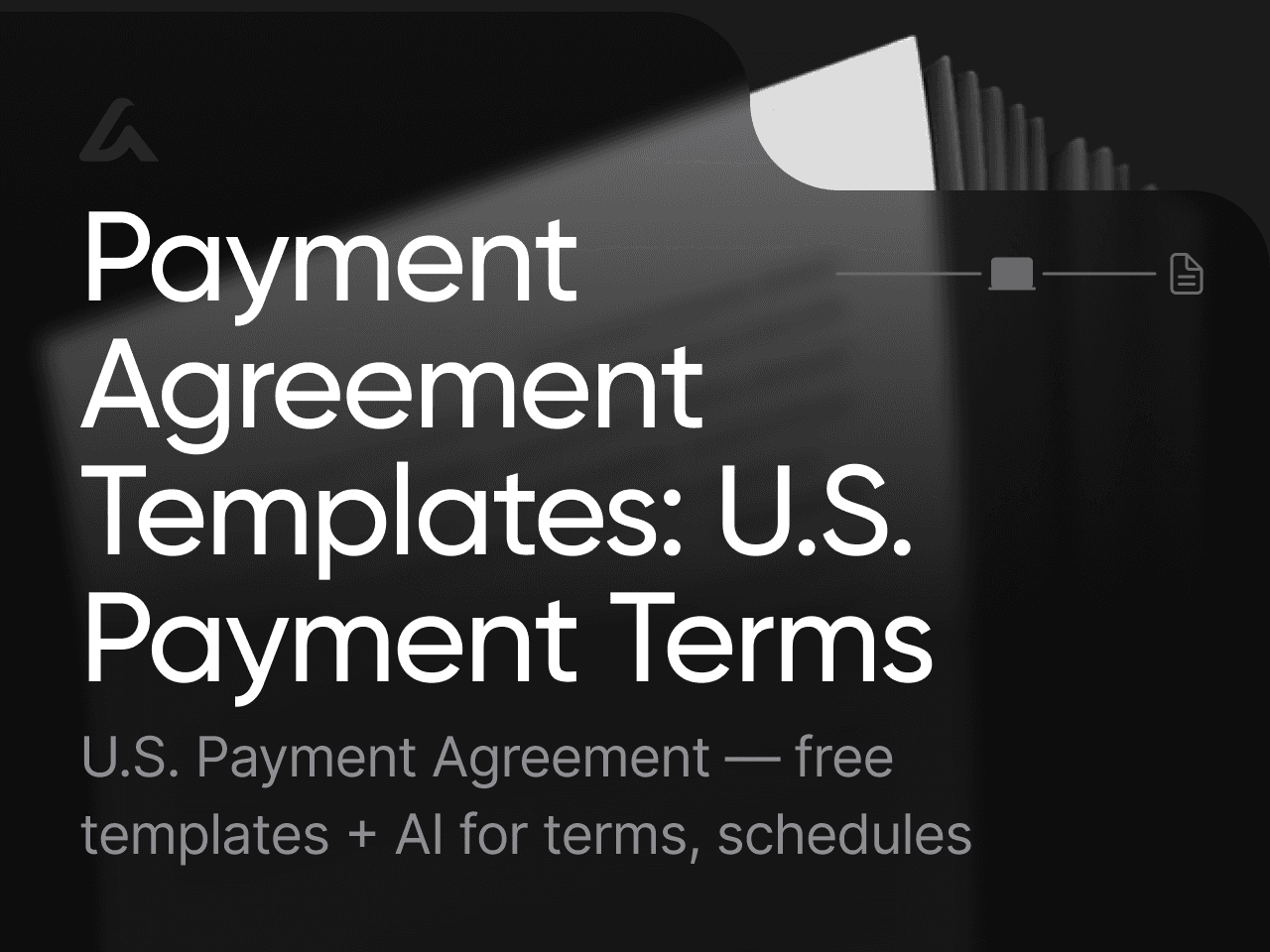AI Lawyer Blog
Free Pet Custody Agreement Template for 2025

Greg Mitchell | Legal consultant at AI Lawyer
3
Breakups and separations already involve emotional and legal complexity. When a shared pet is involved, disputes often escalate quickly. Without a formal agreement, courts may default to outdated property laws when determining who keeps the animal.
For legal professionals, this results in increased case time, client tension, and unclear expectations. For freelancers, designers, and professionals, it can mean unexpected legal challenges, disrupted routines, and strained personal or work relationships.
For a more comprehensive understanding of Pet Custody Agreements — including their legal nuances, variations across jurisdictions, and practical applications — we invite you to explore our in-depth overview article dedicated to this document category.
You Might Also Like:
Free Babysitting Contract Template (Customizable & Instant Download)
Divorce Settlement Agreement Template (2025): Free, AI-Customizable & Legally Sound
What Is a Pet Custody Agreement?
A Pet Custody Agreement is a formal contract between two individuals who share a pet, typically after a breakup, separation, or change in living arrangements. It outlines each party’s responsibilities and expectations regarding pet ownership and care.
Common elements of this agreement include:
Legal ownership and primary residence
Visitation and care schedules
Division of ongoing expenses
Emergency medical decision-making
Future relocation planning
Methods for resolving disputes
Why Pet Custody Agreements Matter in 2025
Pet-related legal disputes are on the rise, and several states have updated their laws to reflect changing societal views. Courts are increasingly treating pets as family members rather than property.
California Family Code Section 2605 allows courts to assign ownership of a pet based on the care and well-being of the animal.
Alaska’s House Bill 147 requires judges to consider an animal’s best interest when deciding custody during a divorce.
Illinois amended its Marriage and Dissolution of Marriage Act to allow judges to grant joint or sole custody of a companion animal based on its well-being.
These legal changes show a trend toward prioritizing animal welfare and recognizing the emotional significance of pets in family structures. A formal custody agreement ensures individuals stay ahead of legal expectations.
When Should You Use a Pet Custody Agreement
During a Divorce or Legal Separation
When Moving Out from a Shared Home
In Co-Ownership Between Friends, Roommates, or Relatives
In Blended Families with Shared Pet Duties
Legal Importance and Context
In states that have revised pet custody laws, judges may now consider an agreement as supporting evidence of intent, responsibility, and consistency of care. While not enforceable in every jurisdiction, a clearly written agreement carries significant weight, especially in mediation or out-of-court settlements.
Legal professionals can use this document to strengthen client positions, while individuals benefit from clearly defined rights and duties without the need for litigation.
Key Sections of a Pet Custody Agreement and How to Fill Them Out
A complete Pet Custody Agreement should include the following components:
Personal Information: Names, contact details, and legal identifiers of both parties
Pet Details: Name, breed, birth or adoption date, and microchip or registration numbers
Custody and Visitation Schedule: Allocation of weekdays, weekends, holidays, and special occasions
Expense Sharing: Agreement on payment for food, veterinary care, insurance, and grooming
Medical and Emergency Provisions: Clarification on who makes medical decisions and under what conditions
Relocation Terms: Guidelines for what happens if one party moves and how custody is impacted
Dispute Resolution: Preferred method for handling disagreements, including mediation or arbitration
Signatures and Governing Law: Final signatures, legal jurisdiction, and date of execution
🐕 Legal Tip: Why Pet Agreements Are Evolving in U.S. Law
In recent years, courts have begun to shift away from treating pets as “property” and instead assess custody based on the animal’s emotional bond and well-being — much like child custody decisions.
As of 2025, the following states have officially adopted “best interest of the pet” language into their family law codes:
State | Legal Standard Adopted | Applies During |
|---|---|---|
California | Care-based allocation (Family Code § 2605) | Divorce/separation cases |
Illinois | Shared/joint custody based on well-being | Divorce |
Alaska | Mandatory consideration of pet’s well-being (HB 147) | Divorce & property cases |
New York | “Best interest” standard recognized in several rulings | Select civil cases |
Implication: If you live in one of these jurisdictions, a Pet Custody Agreement that clearly defines daily care, financial responsibilities, and emotional attachment will carry more legal weight than ever before — especially in mediation or if contested in court.
📚 Source: ALDF, State Bar of California, National Law Review
🐾 Real-World Example: “We Almost Lost Custody of Our Dog… Until the Agreement Spoke for Us”
Samantha and Tyler adopted a Labrador retriever, Milo, during their four-year relationship. When they split, both wanted full custody, citing different reasons. But only Samantha had signed and kept a Pet Custody Agreement they had filled out six months prior.
When their disagreement escalated to legal mediation, the agreement clarified who paid vet bills, who took Milo to training classes, and who had primary weekday care. The mediator used the document to propose a 70/30 split in Samantha’s favor — avoiding court, lawyer fees, and emotional distress.
Their takeaway? “This one sheet of paper saved us from losing Milo, and each other’s respect.”
How AI Lawyer Creates Your Document (Step-by-Step)
At AI Lawyer, we believe that drafting legal documents shouldn’t feel like decoding a foreign language. Whether you’re a business owner, landlord, freelancer, or someone navigating a personal matter — you should be able to create a legally sound document without needing a law degree.
That’s why we built a document experience that works like a conversation, not a form. Here’s exactly how it works:
1. You Tell AI Lawyer What You Need
It starts with a simple question:
“What type of document do you want to create?”
You choose from our list of professional templates — whether it’s a rental agreement, contractor form, invoice, publishing contract, or anything else — and AI Lawyer immediately pulls up the structure designed specifically for that use case.
Behind the scenes, the system references U.S. legal standards and best practices to make sure you’re starting from the right foundation.
2. We Highlight the Key Sections
Instead of throwing the whole document at you, AI Lawyer breaks it down.
Each key component — like payment terms, deadlines, responsibilities, clauses — is briefly explained in human language so you know what it means before you fill it out.
It’s like having a lawyer on your shoulder saying,
“Here’s what this section covers, and why it matters.”
3. You Answer Simple, Targeted Questions
AI Lawyer asks you step-by-step questions — like:
Who’s involved?
What are the key dates or timelines?
What are the terms (payments, conditions, obligations)?
Do you need special clauses like confidentiality, termination, or jurisdiction?
Each question is directly linked to a block in the final document — so your answers go exactly where they belong.
4. The Document Builds Itself As You Go
On the right side of your screen, the full document builds in real time.
Every time you answer a question, a corresponding section is added — with legally sound wording, smart defaults, and editable fields.
You’re not just answering a form — you’re watching your document take shape.
This phased process helps:
Reduce overwhelm
Catch errors early
Ensure nothing is forgotten
5. You Edit and Customize Freely
Once all the inputs are in, the full document is unlocked for editing.
You can:
Rewrite any clause
Change formatting
Add or remove sections
Rephrase terms in plain English (or more formal legal tone)
The editor works like a Google Doc — intuitive, responsive, and flexible.
6. Your Final Document Is Yours to Keep
Download in PDF, DOCX, or copy to clipboard.
You can print it, email it, or send it for signature — and revisit your answers anytime to generate updated versions.
Why This Workflow Matters
Most template tools give you a blank form.
We give you a process — one that mirrors how a real attorney would walk you through the creation of a document:
Context → Input → Assembly → Review → Delivery
It’s not magic. It’s just a smarter way to get legal work done — without getting lost in the jargon.
FAQS
Q: What is the meaning of pet custody?
A: Pet custody is the legal arrangement that determines who will care for, house, and make decisions for a pet after a breakup, divorce, or change in living situation. This can include primary custody, shared custody, or visitation rights, depending on what’s agreed or ordered by a court.
Q: What standard do courts use to decide pet custody?
A: While some states still treat pets as property, an increasing number now apply the “best interests of the pet” standard. This considers factors like daily care, emotional bonds, and the pet’s overall well-being — similar to child custody principles.
Q: Who keeps the pet after a breakup?
A: Legally, it’s often the person who can prove ownership (e.g., adoption records, microchip registration, vet bills). However, in states with updated laws, judges may award custody based on who provides the best environment and primary care.
Q: Can we share custody of a pet?
A: Yes. Many Pet Custody Agreements set a shared schedule for care, holidays, and expenses. This works well for cooperative ex-partners who want to remain involved in the pet’s life.
Q: Is a Pet Custody Agreement legally binding?
A: In most states, it can be enforced like any other contract, especially if it’s detailed, signed, and consistent with state law. Even in jurisdictions without specific pet custody statutes, the agreement carries significant weight in mediation or court.
Q: What if one of us moves away?
A: Your agreement should include relocation terms to address how custody will be handled if either party moves — including notice requirements and who covers transportation costs. This avoids future disputes.
Final Thoughts
Pets are no longer treated strictly as property in many legal contexts. A well-structured Pet Custody Agreement reduces conflict, protects emotional bonds, and ensures legal clarity.
Whether you're representing a client or managing your own affairs, this document is a practical step toward responsible and modern pet ownership.
Want a smarter version? Generate a custom contract with AI in seconds
Sources and References
Legal trends and statutory developments discussed in this guide draw on state reforms that incorporate a “best interests of the pet” standard, including California’s Family Code § 2605 on care and ownership of pet animals, Alaska’s pioneering amendment in HB 147, and Illinois’ U.S. Congress — Public Laws (federal) to address companion animals in divorce.
Analysis of how courts and practitioners apply these laws in practice is informed by guidance from the Animal Legal Defense Fund on pet custody disputes and the overview of evolving custody standards in “Custody of Pets in Divorce” on AnimalLaw.info.
Broader context on the shift from treating pets as pure property toward welfare-based frameworks relies on scholarship such as “How to Apply the ‘Best Interest of the Pet’ Standard in Divorce Proceedings in Accordance with Newly Enacted Laws” published via Animal Law resources.
You Might Also Like:



